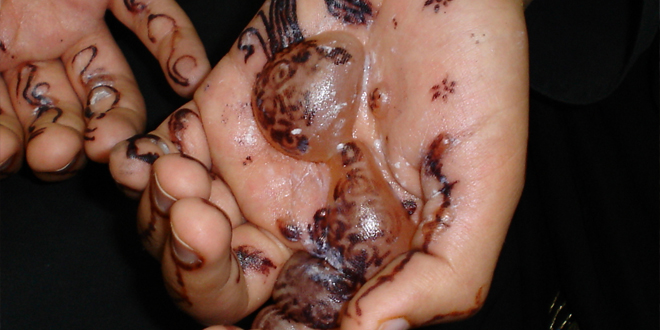
Save yourself from the black henna
Mehendi has been a part of our culture for a long time. Eid and weddings are incomplete without women applying mehendi to their hands and feet, embroidering themselves with beautiful patterns.
However, the natural form of hena has now been replaced with chemical-induced mehendi, which is harmful for the skin.
These days, there is a new type of mehendi, called the ‘black henna’, being used by shopkeepers and beauty salons alike – and this henna has components that can cause skin damage.
Traditionally, mehendi was made by soaking the mehndi leaves, drying them and later crushing them into powder form. This powder was then formulated into a paste and filled in cones for applying on hands. Since it was a detailed process, the time to prepare mehendi this way was longer.
The process of making black henna is shorter and cheaper – which makes it more dangerous. Many women have and still are falling prey to this harmful form of mehendi and the application of this henna has led to skin allergies and burning.
In many cases, the burning of skin is so severe that the patient is not able to recover. It is highly recommended to use reliable cones such as the ones sold by reputed stores as they do not use chemical substances.
If you really want your mehendi to be dark, then rub lemon juice on your henna or some vicks. Heating your hands over steaming water can also give you the desired tone.
Save yourself from the harmful cones and make your safety a priority. Natural mehendi has an earthly smell and has muddy green color, so if you are unsure of spotting the differences between natural and chemical mehendi, then watch out for and avoid cones that give out a pungent smell.

